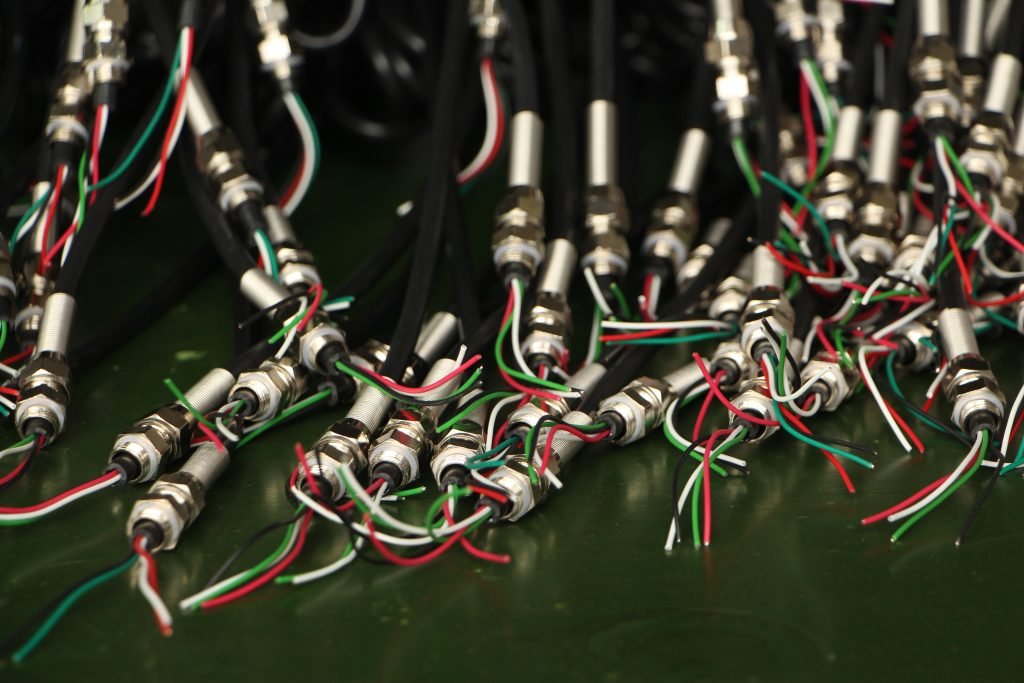sensor kabeli
A sensor cable is a type of cable that is used to connect sensors and actuators. Sensor cables are often used in industrial applications, such as manufacturing and agriculture. Sensor cables are made from a variety of materials, including copper and fiberglass. They are often flexible and thin, making them easy to install and use.
Table of Content:
- Technical specifications: What are the different types of sensors used with cables?
- Pieteikumi: How can cables be used in various industries?
- Future prospects: What are the potential benefits of using cables in electronics?
- Properties of sensor cables: Electrical, mechanical, optical

1.Technical specifications: What are the different types of sensors used with cables?
Cables come in many different shapes and sizes, but they all have one thing in common- they are used to transfer information between devices. Some of the most common types of sensors used with cables aretemperature sensors, pressure sensors, and moisture sensors.
Temperature sensors are used to detect the temperature of something. They work by detecting the difference in temperature between two points and then sending that information wirelessly back to the device that is using them. Pressure sensors work a bit differently. They are usually used to detect when something is being compressed or expanded. This type of sensor sends an electrical current through a wire when it detects pressure and then sends that current back to the device so that it can be converted into a digital signal. Moisture sensors use similar technology to pressure sensors, but instead of measuring pressure they measure water vapor levels.
2.Pieteikumi: How can cables be used in various industries?
Cables have long been used in a variety of industries, from telecommunications to energy. Sensor cables are especially versatile, as they can be used in a wide range of applications. Here are five examples:
- Cables can be used to transmit data between devices. Thermocouples, for example, are often used to monitor temperatures and other conditions inside objects or systems. By using sensor cables, these measurements can be transmitted quickly and accurately over long distances.
- Cables can be used to power devices remotely. Piemēram, a cable may be connected to a battery so that an object can be operated without being directly connected to an electrical outlet. This is especially useful in hazardous or difficult-to-reach places.
- Cables can be used as antennae for communications equipment.
3.Future prospects: What are the potential benefits of using cables in electronics?
Cables have long been seen as a necessary evil in the world of electronics. They are often cumbersome, expensive and slow. But what if cables could be replaced by sensors? Sensors could be embedded in cables to collect data about the environment around them. This information could then be used to improve the performance of electronic devices or to monitor vital systems. The potential benefits of using cables in electronics are vast, and the technology is still in its early stages. But if cable-based electronics can revolutionize how we use computers and other devices, they will have truly made an impact on our lives.
4.Properties of sensor cables: Electrical, mechanical, optical
Sensor cables are a vital component of modern measurement and control systems. They enable devices to communicate with each other and with the outside world, and they play an important role in various industrial applications. Sensor cables are typically made up of three different components: an electrical conductor, a metal sheath, and an optical fiber.
The electrical conductor is the main component of a sensor cable. It’s usually made from metal wires that are twisted together to form a cable. The metal sheath is essential for protecting the wire conductors from external factors like moisture and dust. It also helps to keep the cable flexible and allows it to move smoothly along surfaces. The optical fiber is the final component of a sensor cable, and it’s responsible for transmitting information between devices.
Nobeigumā,a sensora kabelis is a cable that is used to transfer data between devices. This type of cable is needed when the devices are not connected to an outlet or when the outlet is not working properly.
